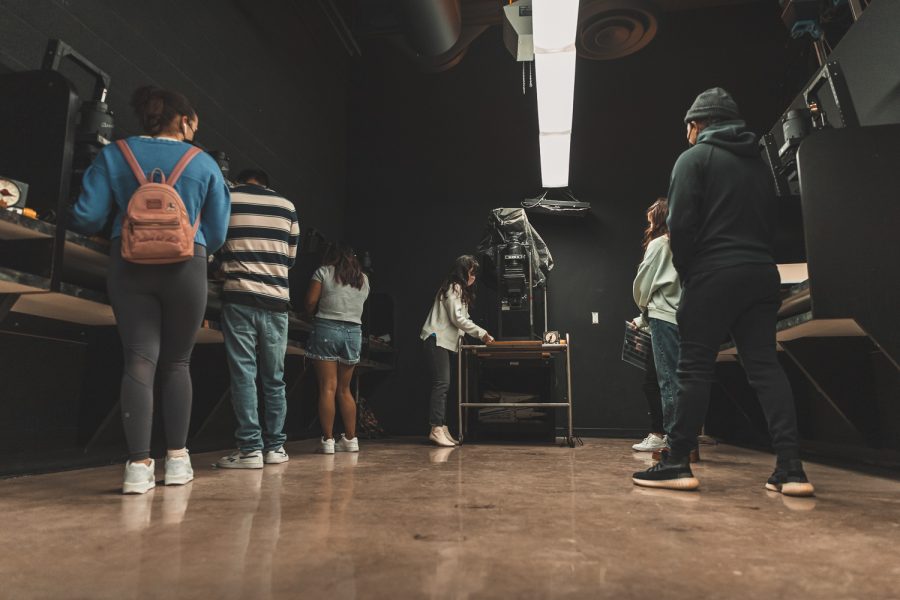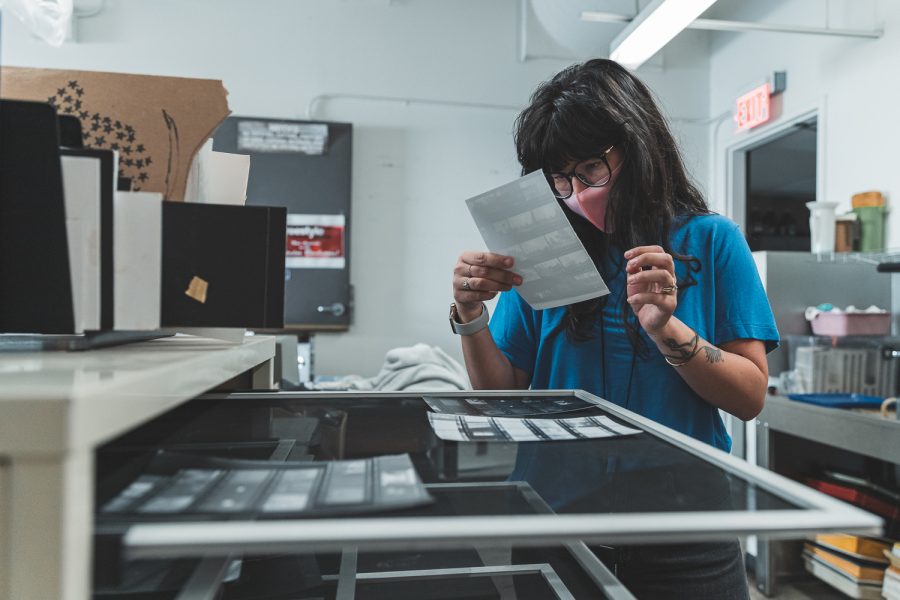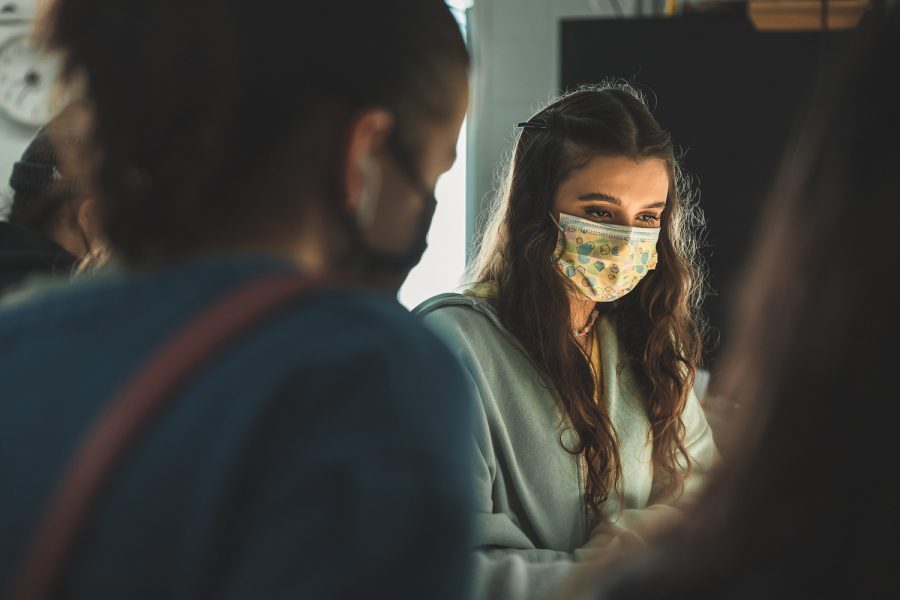A look at in-person classes during COVID: Film photography lab
The lab class lines up at their designated stations in the darkroom during the film photography lab class at the Art and Design Center at CSUN in Northridge, Calif. on Tuesday, Mar. 30, 2021.
April 23, 2021
Prior to the pandemic, students in film photography labs learned how to develop film photos, create contact sheets and print their pictures at the CSUN darkroom. The sudden shift to virtual learning halted in-person instruction and made a hands-on activity a virtual show-and-tell.
Assistant professor of photography Candice Greathouse said adapting to teaching on Zoom went well for the most part, but it became difficult when situations required hands-on teaching.
Greathouse found it difficult to walk students through camera equipment malfunctions or teach them how to correctly load rolls of film over Zoom.
“Small problems like: ‘oh you just didn’t coil your film or load your film all the way through the camera’ would sometimes become a week-long Zoom meeting situation,” Greathouse said. “Very simplistic things became super overwhelming.”
After going through the fall semester with no in-person classes, the art department has multiple labs on campus that follow the hybrid learning method where students alternate between virtual instruction and limited face-to-face learning, according to art department chair Edward Alfano.
When classes went virtual, Alfano said the beginning film photography students had to send their film photos to labs outside of CSUN to get scanned before uploading their assignments online as opposed to doing all that work in the photo lab on campus.
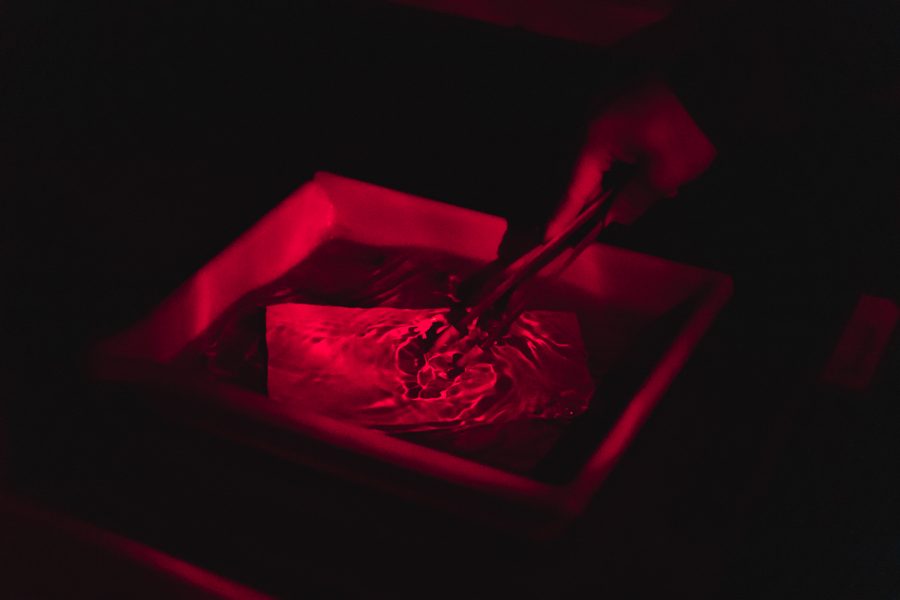
Alfano explained that it was hard to engage and inspire students in more hands-on classes, such as Art 250: “Photography I”, in a virtual setting and prefers the hybrid learning model that is in place for the Spring 2021 semester.
“As a faculty member, I think a lot of us derive excitement and enthusiasm through the looks and actions of students in class because it’s an active environment,” Alfano said. “I don’t know if they’re interested in this. I don’t know if they’re understanding it, and students are more reticent to speak sometimes.”
Greathouse said students are more engaged this semester since they are able to see each other in person, which helps them participate more when they’re on Zoom.
“I think building that trust and that dialogue really encourages students to speak out instead of being nervous and waiting till the end of Zoom class,” Greathouse said. “They also feel a lot more engaged when they do come on Zoom because they’ve met in person and they’ve interacted in their groups so they’re not anonymous faces anymore.”
Although she has had the opportunity to have more one-on-one time with students, Greathouse said she had some difficulty with adjusting to the hybrid learning model.
“It’s been really a lot of micromanaging and making sure students know which day to come and they have their supplies and that they didn’t forget much over the last two weeks,” said Greathouse.
Joan Camarena, a cinema and television arts major enrolled in Art 250, said he prefers learning in-person rather than online because it is easier to take advantage of what the CSUN photo lab has to offer.
“When it’s more hands-on, you learn a lot easier than when it’s on a computer screen and you’re not as attentive,” said Camarena.
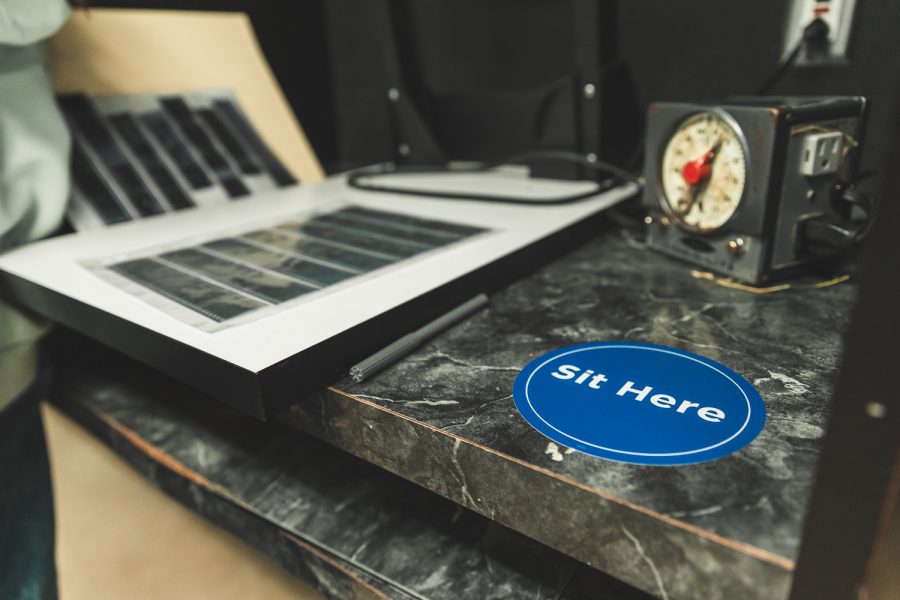
Students are required to fill out a COVID screening survey before coming on campus, and must wear a mask and socially distance while they’re in class. Alfano said all art department classes are equipped with the materials to sanitize the appliances after using them.
Alfano hopes that his department will have more classes following the hybrid model next semester because he believes it creates a better learning environment for students doing more hands-on activities.
